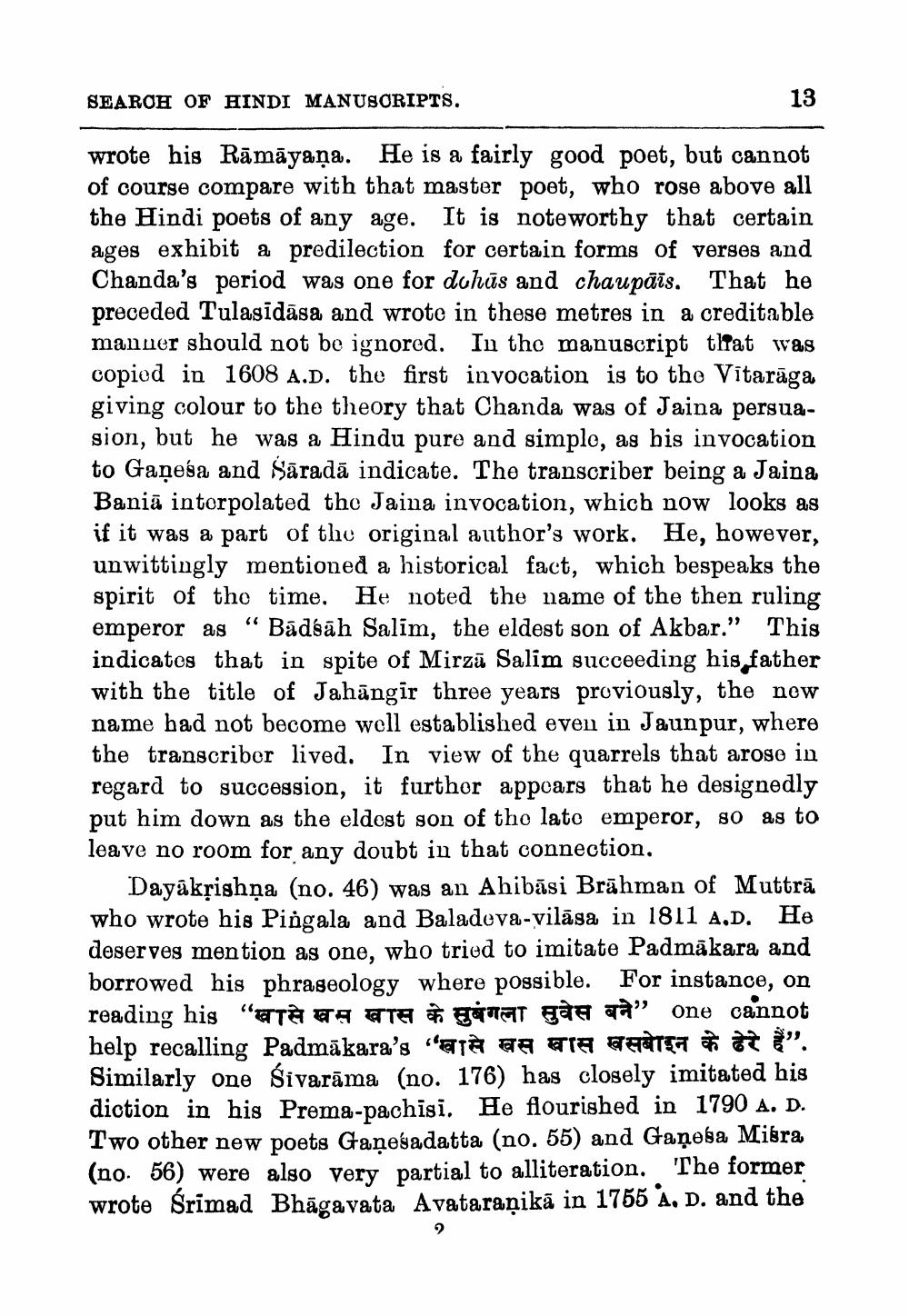________________
SEARCH OF HINDI MANUSCRIPTS.
wrote his Rāmāyaṇa. He is a fairly good poet, but cannot of course compare with that master poet, who rose above all the Hindi poets of any age. It is noteworthy that certain ages exhibit a predilection for certain forms of verses and Chanda's period was one for dohus and chaupais. That he preceded Tulasidasa and wrote in these metres in a creditable manner should not be ignored. In the manuscript that was copied in 1608 A.D. the first invocation is to the Vitaraga giving colour to the theory that Chanda was of Jaina persuasion, but he was a Hindu pure and simple, as his invocation to Ganesa and Saradā indicate. The transcriber being a Jaina Bania interpolated the Jaina invocation, which now looks as if it was a part of the original author's work. He, however, unwittingly mentioned a historical fact, which bespeaks the spirit of the time. He noted the name of the then ruling emperor as "Badsah Salim, the eldest son of Akbar." This indicates that in spite of Mirzā Salim succeeding his father with the title of Jahangir three years previously, the new name had not become well established even in Jaunpur, where the transcriber lived. In view of the quarrels that arose in regard to succession, it further appears that he designedly put him down as the eldest son of the late emperor, so leave no room for any doubt in that connection.
as to
13
Dayakrishna (no. 46) was an Ahibāsi Brahman of Muttra who wrote his Pingala and Baladeva-vilasa in 1811 A.D. He deserves mention as one, who tried to imitate Padmakara and borrowed his phraseology where possible. For instance, on reading his “खासे खस खास के सुबंगला सुवेस बने” one cannot help recalling Padmākara's "खासे खस खास खसबाइन के ढेरे हैं". Similarly one Śivarāma (no. 176) has closely imitated his diction in his Prema-pachisi. He flourished in 1790 A. D. Two other new poets Ganesadatta (no. 55) and Ganesa Misra (no. 56) were also very partial to alliteration. The former wrote Śrimad Bhagavata Avataraṇikā in 1755 ▲, D. and the
2




